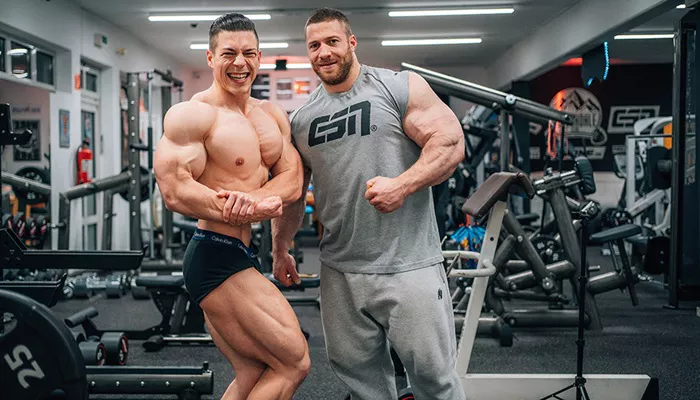The sudden death of Senthil Kumaran Selvarajan, a top Indian bodybuilder and titleholder of Mr. India, shocked the nation. He appeared to be in peak physical shape, representing the highest level of bodybuilding success. But a fatal heart attack ended his promising career, raising serious concerns about the hidden dangers in competitive bodybuilding.
Senthil’s death wasn’t an isolated case.
Akash, a 25-year-old bodybuilder and gym trainer from Avadi, Tamil Nadu, collapsed during contest preparation. Doctors later found that his heart, liver, and kidneys had all failed. The suspected cause: heavy use of steroids and supplements.
Another national champion, Dheeraj Dahiya, who held multiple prestigious titles including Mr. India and Mr. North India, also died suddenly—reportedly from a heart attack.
Even outside of bodybuilding circles, fitness enthusiasts were stunned when Kannada film star Puneeth Rajkumar, known for his strict workout routine, died of sudden cardiac arrest in 2021. Though not a bodybuilder, his case brought attention to the unseen heart risks among fit-looking individuals.
A Global Pattern: What the Research Reveals
These cases in India reflect a larger, global health concern that is now backed by strong evidence.
A 16-year study published in the European Heart Journal tracked 20,286 male bodybuilders who competed in events organized by the International Federation of Bodybuilding and Fitness (IFBB) between 2005 and 2020. The study found 121 confirmed deaths, with the average age of death just 45 years.
More alarming was the discovery that professional bodybuilders faced more than five times the risk of sudden cardiac death compared to amateur competitors.
Lead researcher Dr. Marco Vecchiato from the University of Padova, Italy, explained the motivation behind the study:
“These tragic events, often affecting young and apparently healthy athletes, highlight a gap in our understanding of the long-term health risks associated with competitive bodybuilding.”
What Makes Competitive Bodybuilding So Dangerous?
Dr. Vecchiato and his team identified several key factors that may contribute to higher death rates:
Extreme strength training routines
Rapid weight loss techniques, often involving dehydration
Severe dietary restrictions
Performance-enhancing drug (PED) use, such as anabolic steroids and stimulants
While only 16% of the deceased athletes had confirmed PED use in toxicology reports, the researchers suspect actual usage is much higher due to limited access to autopsy data and underreporting.
Autopsy results often revealed heart abnormalities like thickened heart muscles, clogged arteries, or signs of steroid abuse.
Compounding the problem, the IFBB—despite organizing over 6,000 events per year—submitted just 80 doping samples to the World Anti-Doping Agency (WADA) in the most recent report. Of these, a staggering 13% tested positive, a rate significantly higher than in most sports.
The Toll of Extreme Preparation
Elite bodybuilders often engage in dangerous practices to prepare for competition. These include:
Bulking and cutting cycles that place major stress on internal organs
Dehydration methods to look leaner
Strict dietary protocols that may impact long-term health
“The risk may be greater for professionals because they often train harder, longer, and face more pressure to push their bodies to extremes,” said Dr. Vecchiato.
Mental Health Is Also at Risk
The research also revealed a mental health crisis among bodybuilders. Around 15% of the deaths were due to sudden traumatic events—such as car accidents, suicides, overdoses, or violence.
These were often linked to psychological stress, including:
Body image issues
Performance pressure
Substance abuse
Depression and anxiety
Dr. Vecchiato emphasized:
“These mental health challenges can lead to impulsive or self-destructive behaviors. It’s not just a physical health issue—it’s psychological too.”
Lack of Regulation Adds to the Danger
In many countries, including India, bodybuilding is not officially recognized as a sport. As a result, it lacks the medical oversight that professional athletes in football, cricket, or tennis routinely receive.
This lack of structure means:
No required cardiovascular screenings
Few rules around doping and supplement safety
No monitoring of training and dietary practices
No access to mental health support
“While athletes in mainstream sports are regularly tested and medically supervised, bodybuilders are often left to navigate intense physical demands with little guidance or protection,” Dr. Vecchiato said.
Reactions from Indian Medical Experts
Indian cardiologists are also voicing concern.
Dr. Deepak Krishnamurthy, a Bengaluru-based heart specialist, posted on X (formerly Twitter):
“Was watching old training videos of the Mentzer brothers. Then found out they both died at 49! What’s the point?”
The sentiment echoes what many doctors are now warning: muscles don’t guarantee heart health.
Strength Training Isn’t the Enemy
The researchers stress that their findings should not discourage general fitness or strength training, which can significantly improve overall health and longevity.
Instead, they urge a more balanced view of fitness, one that looks beyond physical appearance and considers internal health and psychological well-being.
“Regular strength training is very beneficial,” Dr. Vecchiato noted. “The problem is when it turns into a pursuit of extreme body transformation at any cost.”
Recommendations for Reform
To make bodybuilding safer, the researchers suggest urgent reforms:
1. Medical Oversight
Mandatory heart screenings for all competitive athletes
Ongoing medical monitoring during training and competition seasons
2. Stronger Anti-Doping Measures
Improved testing protocols
Greater enforcement of bans and regulations
3. Safer Training Practices
Promote realistic body standards
Educate athletes on nutrition, hydration, and safe training
4. Mental Health Support
Counseling and psychological services for body image issues, depression, and performance pressure
5. Policy and Regulation
Create national guidelines for bodybuilding safety
Encourage collaboration between sports federations, medical associations, and policymakers
Conclusion: Fitness Must Include Health, Not Just Looks
The deaths of athletes like Senthil, Akash, and Dheeraj are a wake-up call. While the sculpted bodies of professional bodybuilders may symbolize discipline and strength, they may also conceal life-threatening risks.
The message from scientists, doctors, and concerned fans is clear: true fitness isn’t just about how you look on the outside—it’s about what’s happening inside your body and mind.

